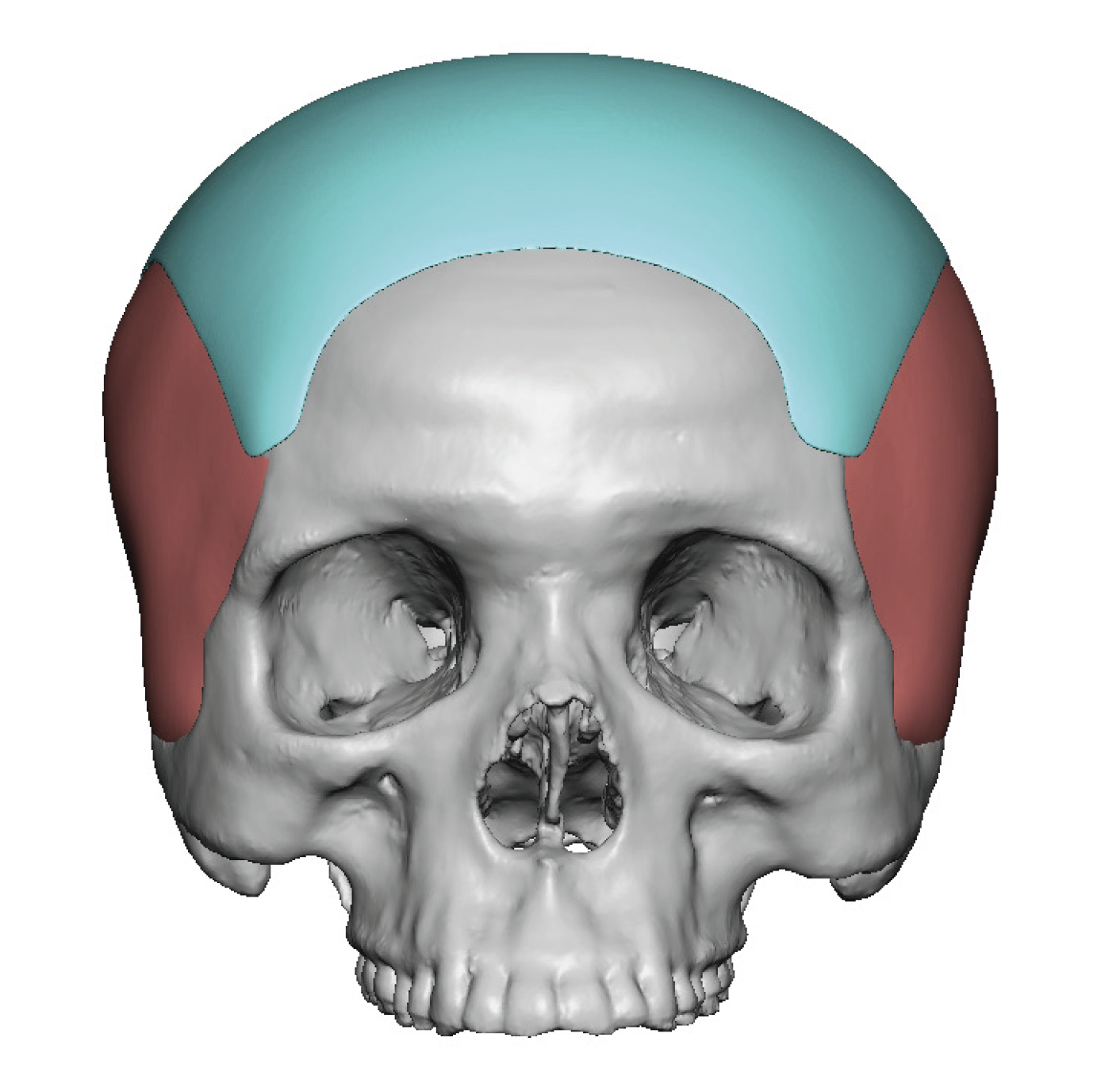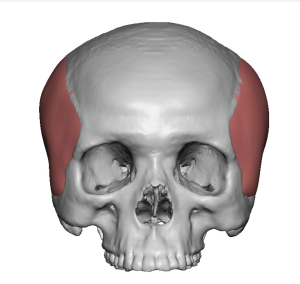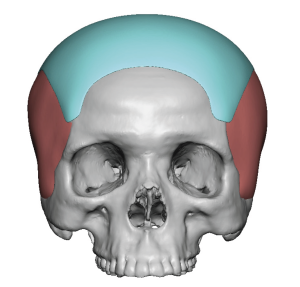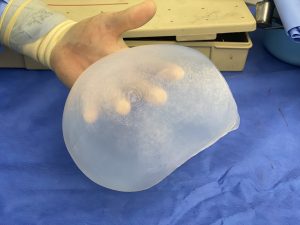Background: The shape of the head is determined by the interface between the exposed bony surfaces of the skull and the overlying temporal muscles on its sides. This creates five surfaces (four sides and a top) which influences the appearance of the head from 360 degree viewing angles. Because any one of these skull surfaces connects with any least three of the other surfaces the shape of one influences the shape of the others. A dramatic example of this interaction is seen in plagiocephaly the most well known skull shape deformity. (The flat side of the back of the head results in a similar but usually less flattening effect on the contralateral forehead)
One underappreciated relationship of the skull surfaces is that of the temporal muscle. These bilateral non-bony sides of the skull do have an underlying bony component but the thick temporal muscles are far more responsible for what is seen on the outside. The origin of the temporal muscle is at the long raised bony temporal lines that run from the brow bones anteriorly to the back of the head. The location of the bony temporal on the sides of the head determines the length of the temporal muscle as well as the shape of the head as seen in the frontal view. The higher the bony temporal line the more convex or even more square head shape that results. The lower the bony temporal line the less convex and even V-shaped the head becomes.The low temporal line, which creates a steep or deficient parasagittal bone shape, can make the sagittal ridge appear raised. (pseudo sagittal crest head shape)
What happens to the temporal muscle when the bony temporal line is low? In many cases it is less in overall volume and the sides of the head simply become more narrow. But in outer cases, usually larger males with bigger overall skulls, the tenporal muscles bulge out as their volume is the same but they have less length one which to cover. This creates an abnormal transition between the top and sides of the head where a temporal muscle bulge occurs with a low almost V-shape groove along the bony temporal line. The apparent thickened upper portion of the temporal muscle could be reduced (not easily) or it can be covered over or augmented by a skull augmentation method that allows transitions over onto the upper portion of the temporal muscle. (more easily achieved) Which method is aesthetically best can be determined by preoperative imaging. But in the vertically short head an augmentation approach can be more effective.

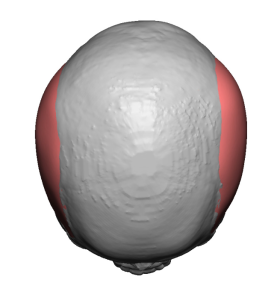

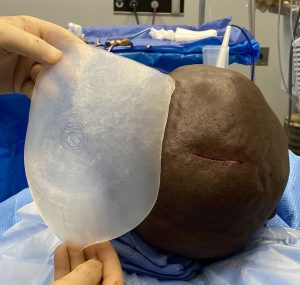
Getting the implant through the incision relies on the deformability of the solid silicone material. While getting it through the incision is a feat onto itself, it is even more challenging to get it fully unfolded and then into proper position as per the design…without being able to visualize most of the implant.
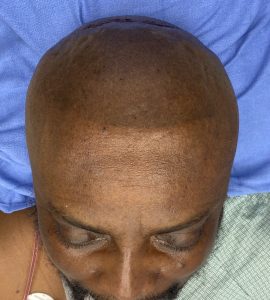
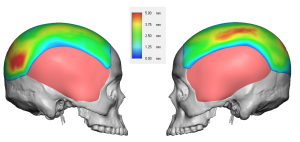
Case Highlights:
1) The wide flat head shape can be associated with apparent thick temporal muscle protrusions due to a low bony temporal line.
2) A custom skull implant design can smooth out the transition between the temporal muscles and the bony skull on top to create a smoother head shape.
3) Placing a long relatively thin skull implant through a limited scalp incision poses challenges that requires experience and persistence to overcome.
Dr. Barry Eppley
Indianapolis, Indiana

